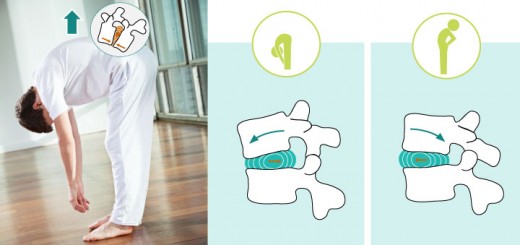Five yoga practices for better digestion
1Our digestive systems are in charge of breaking down food into its basic components, which are then absorbed into the blood and transported throughout the entire body. Food is the main source of energy that enables our bodies to form tissues and perform all vital functions. Our food becomes us, so we literally are what we eat.
Your digestive tract is very long, and it takes a long time for the food to travel through your entire system. For an average male that journey takes about fifty five hours and for an average female it’s about seventy two. Roughly speaking, every meal spends about 4-6 hours in your stomach where it gets broken down both chemically (with hydrochloric acid) and mechanically (by throwing chunks of food against the stomach wall). Your stomach also kills many microbes. Then your meal spends about 6-8 hours in the small intestine, where all the nutritious stuff is extracted and distributed throughout the body to be used for energy or stored for later. Then the rest of what’s left spends up to three days in the colon, which serves as a large fermentation tank. There your gut bacteria picks through the remnants and feasts on fiber.
This long, complicated process takes place after every meal we eat. The smoothness of this process can be affected by many different factors, including the quality and quantity of food you eat, your activity level, and even the amount of stress you are under. When it comes to your digestion, one size definitely doesn’t fit all. When you have any kind of digestive issue, it takes time and effort to tune in to your body and gradually figure out which part of the digestive process is malfunctioning. Do you feel knots in your stomach? Is the waste having trouble moving though (constipation)? Is the food moving through you too quickly (diarrhea)? Is your colon having spastic contractions (IBS)? Is your mental state reflecting in the sensations within your gut? Each of those situations will require a different approach in your yoga practice.
In the yoga practices below we address different factors that affect your digestive process. Every video includes a brief presentation before the practice to give you a better idea of which part of your digestive system that practice is meant to take care of. Please check them out and use them to pick a practice that is most appropriate for your situation.
In this yoga practice, we combine the action of gentle hugging of the belly to increase circulation and improve peristalsis with creating space in the belly to relieve abdominal tension. Our main goal for this practice is to increase blood flow to your abdomen and create space for the food to move through more smoothly. This practice will also give you an opportunity to increase awareness of your digestive system and get a better idea of where you digestive discomfort might be coming from. A number of poses in this yoga practice are done on your knees, so make sure that you have adequate padding to keep your knees happy. View practice sequence >
This yoga practice is meant to help with constipation by using abdominal compression (via movement on suspension of breath) and increasing heat in the system to strengthen agni (digestive fire). It also includes Krama (segmented) exhalation and Apana mudra to encourage Apana vayu flow. Our main goal for this practice is to gently stimulate intestinal contractions via abdominal compression to move waste along. But this practice will also help you gain more control over your abdominal engagement and strengthen your core. View practice sequence >
In this yoga practice, we focus on increasing tonicity both in your diaphragm and your pelvic floor to provide visceral massage to your digestive organs and to help them retain nourishment. This practice will also help you tone your diaphragm and pelvic floor muscles, strengthen your core, stabilize your lumbar spine and reestablish the link between Prana and Apana Vayus to enhance vitality in your system. View practice sequence >
In this yoga practice, we use breath and movement to bring our attention to our digestive systems and then try to envision the connection between our guts and our brains. We use slow exhalation and humming to stimulate the vagus nerve, to settle the stomach, and to calm the mind. View practice sequence >
In this short yoga practice, we use simple supported postures and radiating breath to create the sense of inner spaciousness and ease. We will also use Apanayana mudra to support the health of your digestive system and facilitate balanced elimination. This practice is particularly useful when your abdomen is feeling tense and when you don’t have a lot of energy. View practice sequence >

All those practices have been added to Sequence Wiz Home Yoga Practice app >
Sequence Wiz members have access to sequences of all five practices to use and edit as they wish. Learn more about Sequence Wiz membership >
[jetpack_subscription_form]




















recently started doing yoga and it made a whole other difference in terms of my health and mind. i can feel the difference in how my body feels, my mindset, and obviously my gut. now I don’t have constipation problems like I used to have before because of my sedentary lifestyle.